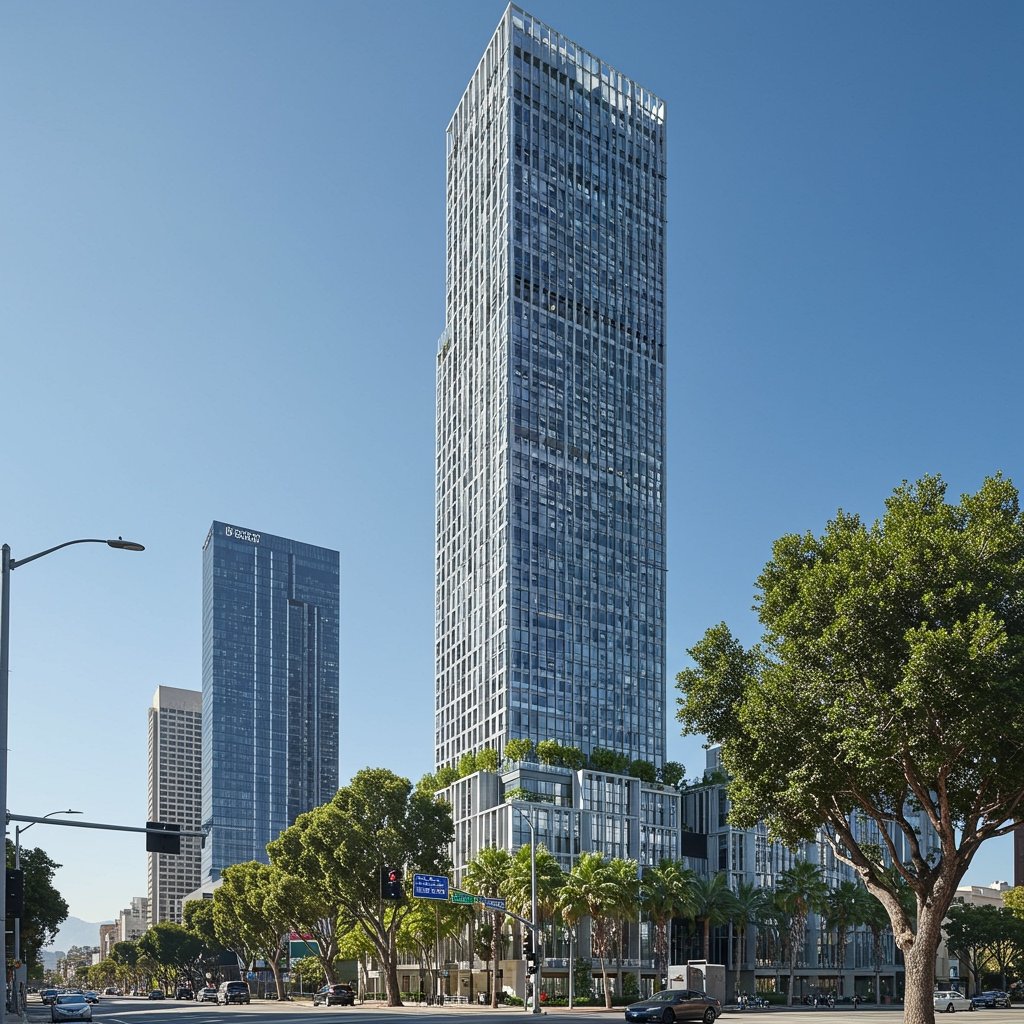LA City Council Approves Controversial Mid-Wilshire Gateway Project
Los Angeles, CA – In a pivotal decision following extensive deliberation, the Los Angeles City Council on Monday, June 9, 2025, granted approval for the hotly debated “Mid-Wilshire Gateway” project. This significant development envisions a towering 50-story mixed-use high-rise situated at 6150 Wilshire Boulevard, poised to dramatically reshape a prominent corner of the Mid-Wilshire district.
The project, spearheaded by developer Zenith Urban Group, received a 10-3 vote in favor from the council, a margin that underscores the deep divisions surrounding the proposal. The decision came after hours of public testimony and council discussion, reflecting the complex balance between the city’s urgent need for housing and the concerns of established communities.
Project Details: Housing, Retail, and Height
The approved plan for the “Mid-Wilshire Gateway” is ambitious in scale and scope. At its core, the development proposes 400 market-rate apartments, designed to cater to the city’s growing population. Crucially, the project also includes a dedicated component addressing Los Angeles’s severe housing affordability crisis: 80 dedicated affordable housing units. These units are intended to provide much-needed housing options for lower-income residents within a desirable, transit-accessible area.
Beyond residential components, the tower’s design incorporates substantial ground-floor commercial space. This element aims to activate the street level, provide local amenities, and contribute to the economic vitality of the immediate neighborhood. The mix of residential density combined with commercial activity aligns with city planning goals often described as “transit-oriented development,” leveraging the project’s location near existing transportation corridors.
Standing 50 stories tall, the structure is set to become one of the most prominent buildings in the Mid-Wilshire skyline, a characteristic that has been both a point of appeal for proponents viewing it as a symbol of growth and modernization, and a significant point of contention for opponents concerned about its scale.
Community Opposition and Concerns
The path to approval for the “Mid-Wilshire Gateway” was marked by considerable community pushback. Local residents, neighborhood associations, and advocacy groups voiced strong opposition throughout the planning and review process. Their concerns, articulated vehemently during public hearings and in numerous letters and petitions, centered primarily on the potential negative impacts of the large-scale development on the existing urban fabric.
A primary point of contention was the potential for increased traffic density. Critics argued that adding over 400 residential units and commercial space would overwhelm already congested streets in the Mid-Wilshire area, leading to longer commute times and diminished quality of life for current residents. The inadequacy of the local transportation infrastructure to absorb the influx of new residents and visitors was a recurring theme in the opposition’s arguments.
Related to traffic concerns were issues surrounding parking limitations. Opponents expressed worry that the project’s proposed parking capacity would be insufficient, leading to spillover parking onto residential streets and exacerbating existing parking challenges in the dense urban environment. They contended that the scale of the development demanded a more robust parking solution to mitigate neighborhood impact.
Furthermore, significant opposition arose from concerns about the building’s impact on the neighborhood’s character. Many residents feel the 50-story tower is out of scale with the surrounding buildings, potentially disrupting the aesthetic and historical feel of certain parts of Mid-Wilshire. Arguments were made that the project represented an unwelcome precedent for hyper-dense development that could fundamentally alter the low-to-mid-rise character of adjacent residential areas.
Proponents Argue for Housing and Economic Growth
Countering the opposition, proponents of the “Mid-Wilshire Gateway” project emphasized the critical benefits they believe the development will bring to Los Angeles. A central argument focused on the city’s dire housing crisis. With rents and home prices reaching unprecedented levels, supporters argued that adding 400 market-rate and 80 dedicated affordable housing units is an essential step in addressing the severe housing shortage that plagues the region.
They highlighted that the project contributes meaningfully to the city’s housing goals, providing homes for hundreds of individuals and families in a well-located area with access to jobs and transit. The inclusion of dedicated affordable units was particularly cited as a positive aspect, offering housing security to residents who might otherwise be priced out of the area.
In addition to housing, proponents argued the project would stimulate economic activity in the Mid-Wilshire area. The construction phase alone is expected to create numerous jobs, providing a short-term economic boost. Once completed, the ground-floor commercial spaces are anticipated to attract businesses, generating employment opportunities and tax revenue for the city. The influx of new residents is also expected to support existing local businesses.
Developer Zenith Urban Group, while not explicitly quoted in the initial summary, likely presented their vision emphasizing these benefits, positioning the tower as a necessary and positive step for the future of the Mid-Wilshire district and Los Angeles as a whole.
The Council’s Deliberation
The 10-3 vote reflected a council majority that ultimately sided with the arguments regarding housing need and economic potential, while acknowledging the validity of community concerns. Council members supporting the project likely weighed the city’s housing emergency and the proposed affordable unit contribution heavily against the potential negative impacts cited by the opposition. Discussions likely included potential mitigation measures for traffic and parking, although the effectiveness of such measures remained a point of contention for critics.
Conversely, the three dissenting votes suggest council members who were either more persuaded by the community’s arguments regarding scale, traffic, and neighborhood impact, or felt that the proposed mitigations were insufficient. Their opposition underscored the difficulty city officials face in balancing competing interests in a rapidly growing and changing urban environment.
The approval of the “Mid-Wilshire Gateway” project signifies the city’s commitment to fostering density, particularly along major corridors, as a strategy to combat the housing crisis. However, the lengthy debate and significant opposition serve as a clear reminder of the challenges inherent in implementing such large-scale developments within established urban neighborhoods.
Next steps for the project will involve navigating the final permitting processes before construction can commence, a phase that will undoubtedly continue to be watched closely by both proponents and the community.





